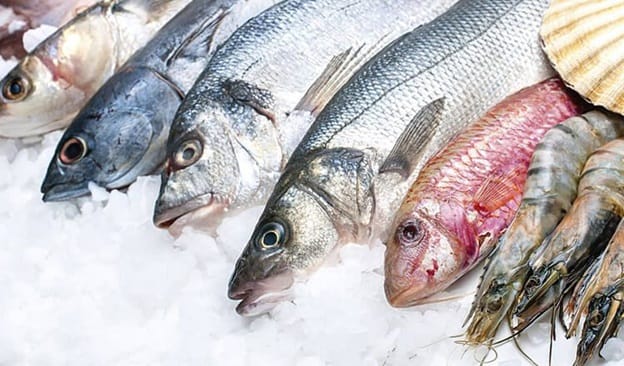
Cold Room Storage Solutions for the Fish Industry
The fish industry, a key player in global food production, requires specialized storage solutions to maintain product quality, preserve freshness, and ensure compliance with health and safety standards.
Cold room, also known as refrigeration storage, is essential in the fish industry, as it helps keep fish products at optimal temperatures to reduce spoilage and prevent the growth of harmful bacteria.
This article will explore the importance of cold room storage solutions in the fish industry, types of cold room systems, and best practices for maintaining quality and safety.
The Importance of Cold Room Storage in the Fish Industry
Fish is a highly perishable product. It can spoil within hours of being harvested or caught, especially if it is not kept at the correct temperature. Temperature control is critical to preserve the texture, flavor, and nutritional value of the fish, and to ensure that it remains safe for consumption.
The fish industry relies heavily on cold storage to extend the shelf life of fresh and frozen fish. From fishing vessels and processing plants to distribution centers and retail outlets, cold storage plays a key role at every stage of the fish supply chain. In addition to extending shelf life, fish cold room ensures that fish products remain in peak condition for transport, packaging, and sale to customers.
Cold room storage also helps minimize waste in the fish industry by reducing the spoilage rate. When fish is stored and transported at the correct temperatures, it remains fresh and retains its quality, thereby minimizing losses due to bacterial contamination or quality degradation.
Types of Cold Room Storage Solutions
Several cold room storage solutions are available to meet the diverse needs of the fish industry. The choice of system depends on various factors such as the type of fish, the volume of storage required, and the specific environmental conditions of the facility. The following are the most common types of cold room storage systems used in the fish industry:
1. Blast Freezers
Blast freezers are designed to rapidly freeze fish products, ensuring that they maintain their texture, moisture, and nutritional value. This is particularly important for high-quality fish that will be sold as premium products.
2. Cold Storage Rooms
Cold storage rooms, also known as refrigerated storage rooms, are large-scale refrigeration units used to store fresh or frozen fish at a consistent temperature. These rooms can be customized in terms of size, shelving, and temperature control to accommodate a variety of fish species and volumes. Cold storage rooms are ideal for holding fish products in bulk before they are processed or transported.
3. Walk-In Freezers
Walk-in freezers are similar to cold storage rooms, but they are designed specifically for freezing fish at low temperatures. These units are accessible from the inside, allowing workers to walk in and store or retrieve fish products easily. Walk-in freezers are commonly used in processing facilities and distribution centers for long-term storage of frozen fish.
4. Refrigerated Containers and Reefer Trucks
Refrigerated containers (also known as reefer containers) and reefer trucks are used for transporting fish products over long distances. These systems are equipped with refrigeration units to maintain the required temperature during transit. Whether moving fresh or frozen fish, refrigerated containers and trucks are crucial for ensuring that fish products remain safe and fresh while being transported from fishing vessels to processing plants, wholesalers, and retailers.
Best Practices for Cold Room Storage in the Fish Industry
While cold room storage plays a critical role in the fish industry, it is equally important to implement best practices to maintain the effectiveness of cold storage systems and ensure the highest quality of fish products. Below are key practices for managing cold room storage in the fish industry:
1. Proper Temperature Control
Maintaining the correct temperature is paramount in cold room storage. For fresh fish, the ideal temperature is between 0°C and 4°C, while frozen fish should be stored at temperatures below -18°C. Consistent temperature monitoring is essential to prevent temperature fluctuations that could lead to spoilage or the growth of harmful bacteria. Advanced cold storage systems often feature automated temperature control and remote monitoring to ensure that the environment remains stable.
2. Adequate Airflow and Ventilation
Good airflow and ventilation are crucial to prevent moisture buildup and ensure even cooling throughout the cold room. Proper ventilation helps reduce the risk of ice formation on fish products, which can negatively impact their quality and texture. Adequate airflow also prevents the buildup of odors and promotes hygiene by reducing the chances of contamination.
3. Regular Cleaning and Maintenance
Regular cleaning and maintenance of cold storage units are essential for maintaining hygiene and preventing contamination. Fish products are highly susceptible to bacterial growth, so it is important to clean cold rooms, shelving, and refrigeration equipment regularly. This includes disinfecting surfaces, cleaning drains, and ensuring that condensation is minimized.
4. Stock Rotation and FIFO (First In, First Out)
Implementing a stock rotation system is crucial to ensure that older fish products are used first and that newer arrivals are placed in the appropriate storage areas. The FIFO system helps reduce waste and ensures that fish products are used within their optimal shelf life.
5. Proper Packaging
Packaging plays an important role in maintaining the quality of fish during storage. Fish should be properly packed in moisture-resistant materials to prevent freezer burn and dehydration. Additionally, vacuum-sealing fish products can help preserve their freshness by minimizing exposure to air.
6. Monitoring and Documentation
In the fish industry, compliance with food safety standards and regulations is essential. It is important to keep detailed records of temperature monitoring, cleaning schedules, and maintenance activities to ensure that the cold room storage systems are functioning properly. Regular audits and inspections should be conducted to verify that storage conditions meet industry standards and regulations.
